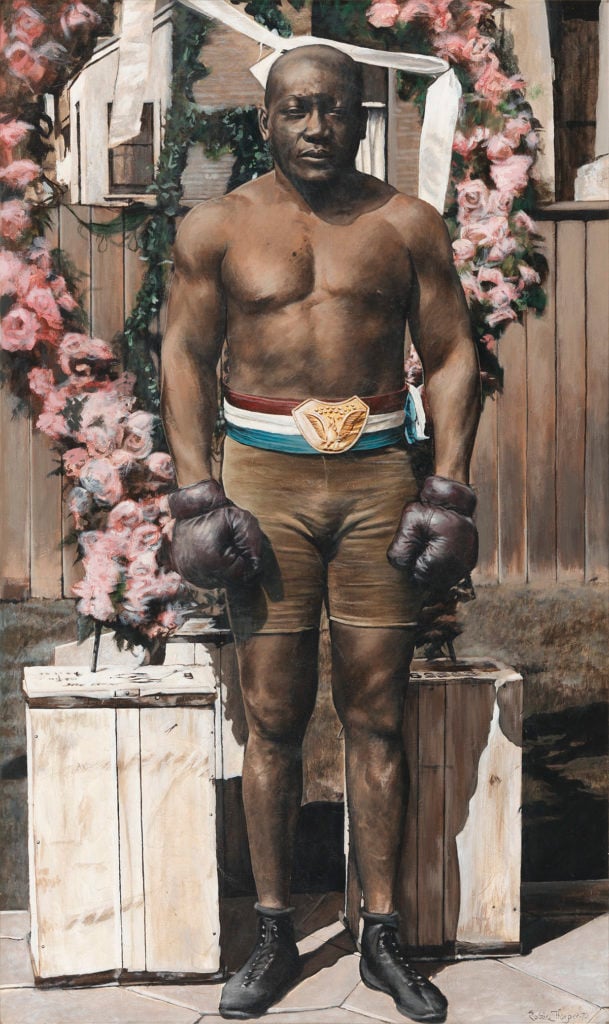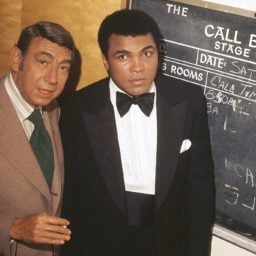A collection of artwork that once adorned the offices of the legendary Johnson Publishing Company shattered records left and right yesterday at Swann Galleries. The sale marked a concluding chapter in the turbulent history of a much-admired institution that changed the landscape of American magazines with the publication of Ebony and Jet before declaring bankruptcy last year.
Still, the power of the Johnson name—as well as a growing interest in African American artists who have often been pushed to the art-historical and art-market margins—combined to create what was, in the words of the auction house’s director of African American fine art Nigel Freeman, “a perfect storm of an auction.” The white-glove sale—100 percent of the 87 lots found buyers—racked up $2.7 million, more than doubling the expected high estimate.
A staggering 51 of the 85 lots in the sale set new auction records for the artists, including Carrie Mae Weems, Richard Mayhew, and Loïs Mailou Jones. An additional 22 lots marked artists’ auction debuts. Freeman noted that while the estimates may appear conservative after the fact, so many of the artists featured in the sale had few, if any, public auction histories—which is not unusual in the highly skewed art market, where artists of color, and black artists in particular, have been systemically overlooked or undervalued for decades.
“The biggest factor was the excitement regarding the Johnson Publishing Co. provenance and the quality of the collection,” Freeman told Artnet News. “It made all the difference.”
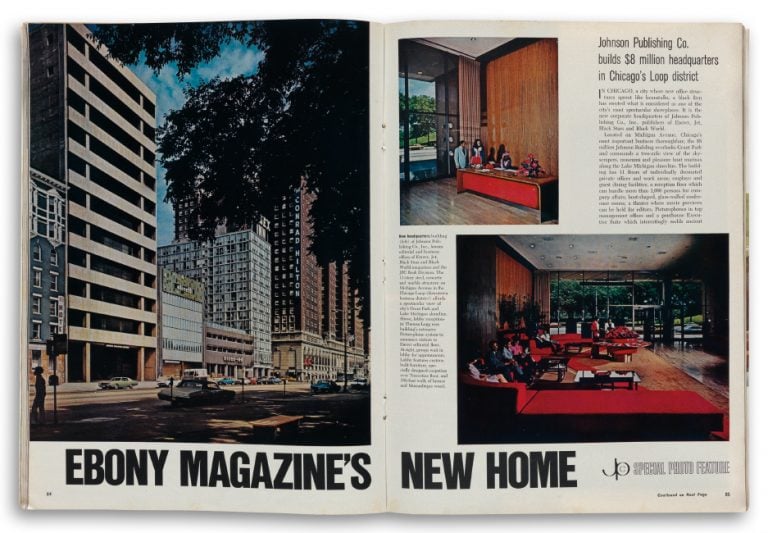
A feature in the September 1972 edition of Ebony Magazine debuting the Johnson Publishing Company’s new headquarters. Courtesy of Swann Galleries.
And indeed, the works, created by 75 artists over the course of the publishing company’s history, reflect the lived experiences of African American people in the United States and abroad. Many of the works had not been seen by the public in more than 70 years until they were displayed at Swann ahead of the sale. The collection—which comprises sculptures, paintings, and drawings—was previously housed in Johnson’s downtown Chicago offices, which opened at 820 S. Michigan Avenue in 1971.
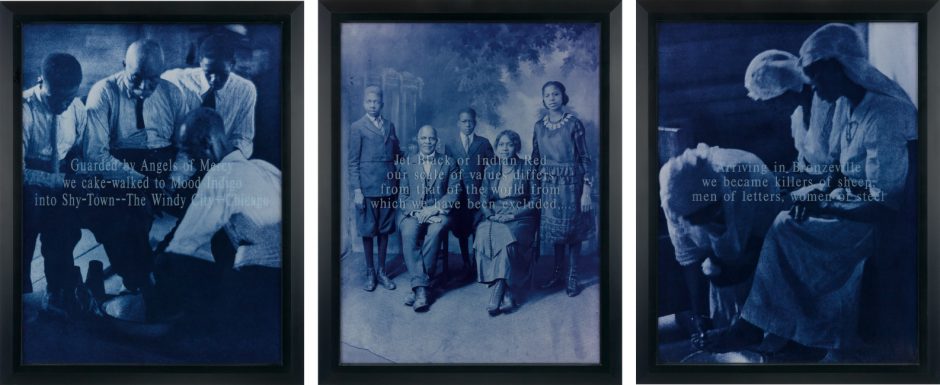
Carrie Mae Weems, Untitled (1996-97), detail). Courtesy of Swann Galleries.
The sale, which unfolded over the course of three and a half hours, was characterized by dramatic shattering of pre-sale estimates and records that served as a stark reminder of how much the market has yet to catch up in its recognition of artists who have proven hugely influential to American art history. The highly coveted first lot was Henry Ossawa Tanner’s Moonrise by Kasbah (Morocco) (1912) which sold for $365,000, the second highest price for his work at auction and considerably over its $250,000 high estimate. Ossawa Tanner created the turquoise canvas during a trip to Tangiers and other Moroccan cities.
The sale also ended with a bang, as Carrie Mae Weems’s photographic series Untitled (1996), consisting of seven chromogenic prints with overlaid sandblasted text, sold for $305,000, more than double its $150,000 high estimate and an auction record the MacArthur Foundation grant-winning artist.
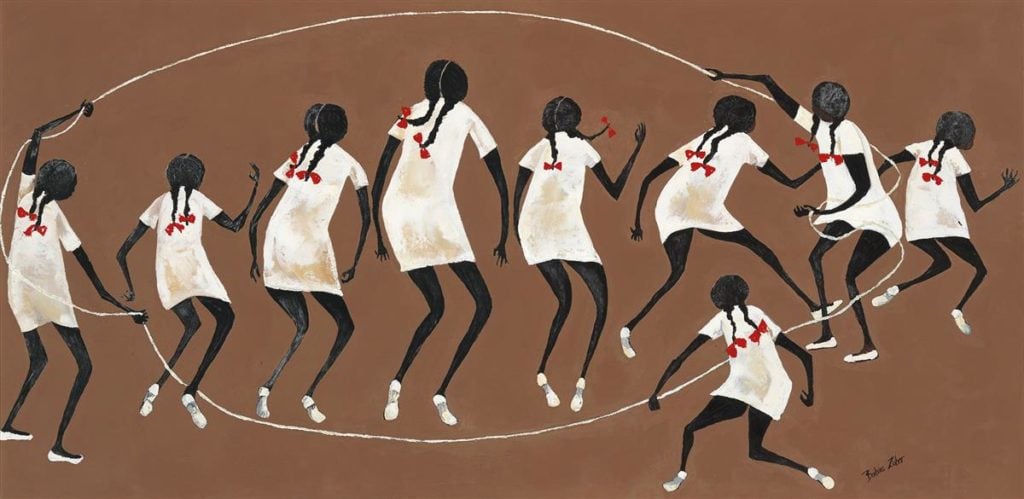
Barbara Johnson Zuber, Jump Rope (ca. 1970). Courtesy of Swann Galleries.
According to Freeman, the most sought-after lot was Barbara Johnson Zuber’s Jump Rope (ca. 1970), which sold for $87,500 against a high estimate of $1,500. Zuber, who died in 2019, was the first African American woman to graduate with a BA from Yale University.
Meanwhile, a portrait of boxing legend Jack Johnson by Robin Harper (who now goes by the name Kwasi Seitu Asantu) also knocked out expectations: the work sold $185,000, 35 times its high estimate. The image ran on the cover of Ebony magazine in March 1978 for an issue dedicated to heavyweight champions.
Other highlights of the sale included Loïs Mailou Jones’s Bazar Du Quai, Port Au Prince, Haiti (1961), which sold for $75,000, a record for the artist at auction; Richard Mayhew’s Departure (2006), which fetched $233,000, three times its high estimate; and Elizabeth Catlett’s cast bronze sculpture Sister (1973), which sold for $175,000.
Some may decry the fact that the entire collection will not end up in a museum (although some institutions were likely among the bidders for individuals objects). But at least part of Johnson’s legacy will be preserved for the public. Last summer, four foundations teamed up to buy the company’s historic archive for $30 million. They donated it to the National Museum of African American History of Culture in Washington, DC; the Getty Research Institute in Los Angeles; and other cultural institutions.
